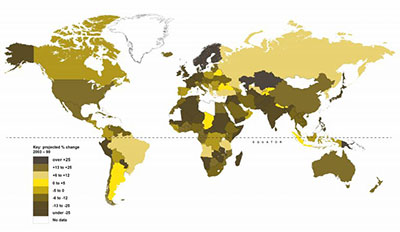Colour blindness can impact learning across the curriculum and can be a serious disadvantage in some subjects.
Our studies show that by Year 7 about 80% of children have never been screened for colour blindness, despite 75% having had an NHS eye test. This means there will be a significant number of colour blind students in every secondary school who will not even be aware that they are colour blind. Consequently neither you/your school or the child’s parents/other teachers will know which pupils are affected. As a consequence non-diagnosed pupils are unlikely to receive any support at all.
As a teacher you are unlikely to have had any training in how to identify and support your colour blind students and you may not be aware that these students are entitled to extra help in some external exams (for example geography, chemistry practicals). For more specific advice on impacts for external exams see The WJEC/Eduqas CVD Guide which, although created for those designing questions for external assessments, is applicable to many classroom circumstances. By adopting the advice and techniques relevant to your subject you can ensure that all of your colour blind learners including the undiagnosed ones, are better supported in your lessons. See also the Secondary School and Further Education section of our Resources for Teachers.
Take particular care with interactive whiteboards and information projected onto screens as these can ‘wash out’ colours making coloured information more difficult to see. Colour blind students can even miss important parts of the lessons because they can’t clearly see the pointer (read the comments of International Scotland rugby players Mike Blair and Chris Paterson discuss this in the ‘World Rugby’ guidance – scroll down to Post Match Analysis, Classroom Training and Education) or because of poor choice of colours chosen to highlight graphs, charts and diagrams.






